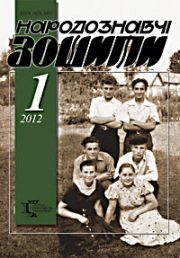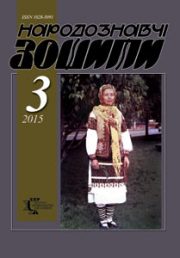The Ethnology Notebooks. 2023. № 2 (170), 361—366
UDK27-526.62(=161.2:4-15)
DOI https://doi.org/10.15407/nz2023.02.361
KOZINCHUK Vitaliі
- ORCID ID: https://orcid.org/0000-0002-8518-5686
- Doctor of Philosophy (Ph.D)
- Member of the National Union of Artists of Ukraine,
- Assistant professor at the Department of Theology at Ivan Zolotousty Academy,
- Senior Researcher at Carpathian Art Museum,
- Doctoral student of the Vasyl Stefanyk Precarpathian National University,
- 57, Shevchenko Str., 76000, Ivano-Frankivsk, Ukraine,
- Contacts: e-mail: br_vitalik@bigmir.net
Abstract. In today’s culture a study of Ukrainian canonical and non-canonical church iconography in the context of sacred art of Western Europe is very relevant.
The purpose of this scientific research of art and spirituality of Ukrainian icons in the context of sacred art of Western Europe.
Object of study is the Ukrainian canonical and non-canonical iconography of cult art, the subject — is the reflection of Western European elements in the artistic church works of Ukraine.
Methodological basis of this research is based on principles of objectivity and historical sacral art. The methodology of this research is to engage in fundamental principles of systemic art analysis. The article uses the methodological principles of domestic and foreign culturologists, theologians and art critics (G. Dyatleva, S. Khvorostukhin, O. Semenov, V. Ovsiychuk, D. Stepovyk, V. Zhaboryuk, M. Joseph, P. Vysotskaya etc.). For the formation of the source base, an analysis of basic culturological, art and theological researches studies covering the field of interest and the review by the author of canonical and non-canonical icons and paintings out of the collections that are in the Museum of Art of Prykarpattya and other museum-type establishments was carried out.
The basis of the work is the authors own observation with references to other authoritative sources.
The article takes a deeper look at the art of Ukrainian canonical and non-canonical church iconography in the context of cult painting of Western Europe. The author analyzed the evolution of the iconographic canon and the emergence of new Western European compositional non-canonical variants that have cognitive, suggestive, educational, communicative and other functions, which gives an opportunity to express and interpret iconography as «theology in paint». It is determined that Ukrainian canonical and non-canonical iconography provides close cultural and spiritual ties of Ukraine with other countries of Western Europe and contributes to the Christian education of the believer. The topic of the art of Ukrainian canonical and non-canonical church iconography in the context of the cult painting of Western Europe is new. It is not sufficiently covered in scientific circles and needs more detailed scientific substantiation and proper research.
Keywords: canon, icon, painting, art, culture, style, renaissance, baroque, iconography.
Received 16.03.2023
REFERENCES
- Dzhozef, M. Raya. (2011). Face of God: Introduction to Eastern spirituality. Lviv: Svichado [in Ukrainain].
- Dyatleva, G.V., Khvorostukhina, S.A., & Semenova, O.V. (2001). Popular history of painting. Western Europe. Moscow: Veche [in Russian].
- Zhaboriuk, A.A. (2015). Baroko: Age, person, style, art world. Odessa: Astroprint [in Ukrainain].
- Zholtovchkyi, P. (1982). Drawings of Keivo-Lavra iconography worshop: Album-catalog. Kyiv: Naukova dumka [in Ukrainian].
- Stepovyk, D.V. (2013). New ukrainian icon XX and beginning of XXI centuries: Traditional iconography and new style. Lviv: Misioner [in Ukrainian].
- Ovsiichuk, V. (1991). Masters of Ukrainian baroque. Kyiv: Naukova dumka [in Ukrainian].






